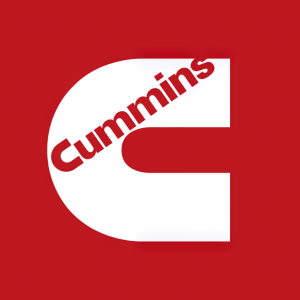Welcome to our dedicated page for Cummins news (Ticker: CMI), a resource for investors and traders seeking the latest updates and insights on Cummins stock.
Cummins Inc. (NYSE: CMI) maintains its position as a global power technology leader through continuous innovation in diesel engines, clean energy solutions, and sustainable infrastructure. This news hub provides investors and industry professionals with essential updates on corporate developments, financial performance, and technological advancements.
Access real-time information about earnings reports, strategic partnerships, product launches, and environmental initiatives. Our curated news collection covers operational milestones across Cummins' core segments: engine manufacturing, power generation systems, and zero-emissions technologies like hydrogen fuel cells through its Accelera™ division.
Stay informed about regulatory compliance updates, supply chain developments, and progress toward PLANET 2050 sustainability goals. Content types include quarterly financial disclosures, leadership announcements, R&D breakthroughs, and market expansion updates across 190 countries.
Bookmark this page for streamlined access to verified Cummins news. Combine historical context with current developments to assess the company's role in powering global industries while transitioning to cleaner energy solutions.
Cummins Inc. (NYSE: CMI) has unveiled its new 2025 6.7-liter Turbo Diesel Pickup engine system for Ram Heavy Duty, extending their partnership with Stellantis through 2030. The advanced engine system will be featured in the 2025 Ram 2500, 3500 Heavy Duty Pickups and Ram 3500, 4500, and 5500 Chassis Cab trucks.
The new engine delivers enhanced performance with High-Output ratings of 430 horsepower and 1,075 lb.-ft. of torque for Pickups, and 360 horsepower and 800 lb.-ft. of torque for Chassis Cab. Key improvements include a brand-new 8-speed transmission, improved acceleration and towing capabilities, reduced noise and vibration, advanced emissions air handling, and enhanced serviceability features including top-side maintenance access and in-cab software updates.
The engine, manufactured in Columbus, Indiana, represents a significant evolution from the first-generation 5.9-liter, 160-horsepower engine to today's more powerful 6.7-liter version.
Cummins Inc. (CMI) announced two key leadership changes effective March 15. Bonnie Fetch, currently VP and President of Distribution Business, has been promoted to Executive VP and President of Operations, succeeding Srikanth Padmanabhan who announced retirement in January. Fetch, who joined Cummins in 2018 after 20 years at Caterpillar, will oversee New and Recon Parts business and global operating functions.
Shon Wright, currently VP of Cummins Components and Software, has been appointed VP and President of Distribution Business. Wright, with 22 years at Cummins, will focus on sales and service support, employee development, and operational performance. Both appointments reflect the company's commitment to advancing its Destination Zero strategy and delivering customer-focused solutions.
The Board of Directors of Cummins (NYSE: CMI) has declared a quarterly cash dividend of $1.82 per share. The dividend will be paid on March 6, 2025, to shareholders who are on record as of February 21, 2025.
Cummins Inc. (NYSE: CMI) has announced the acquisition of First Mode's assets, a leader in retrofit hybrid solutions for mining and rail operations. The acquisition encompasses hybrid mining and rail product lines, along with the complete IP portfolio including hydrogen and battery powertrain solutions.
The deal includes First Mode's commercial portfolio, manufacturing and technical teams across Australia, United States, and Chile. The technology represents the first commercially available retrofit hybrid system for mining equipment, promising reduced total cost of ownership while advancing decarbonization efforts.
First Mode will continue serving customers through the transition, with product shipments expected in Q1. The acquired operations will be integrated into Cummins' Power Systems industrial segment, strengthening the company's position in providing decarbonization solutions for the mining industry through product hybridization and clean fuels such as ethanol and methanol.
Accelera, Cummins Inc.'s [NYSE: CMI] zero-emissions segment, will provide a 100-megawatt (MW) PEM electrolyzer system for bp's Lingen green hydrogen project in Germany. The system, bp's largest hydrogen production facility to date, will comprise 20 PEM HyLYZER®-1000 electrolyzer units manufactured at Accelera's new plant in Guadalajara, Spain.
Set to be fully commissioned in 2027, the facility will produce up to 11,000 tons of green hydrogen annually. The system will be powered by renewable electricity from offshore wind, supporting bp's Lingen refinery and regional industrial customers, including steel and chemical producers. This project represents a significant advancement in Germany's hydrogen economy development.
Accelera has deployed over 600 electrolyzer units globally, including notable projects such as a 20 MW facility in Quebec, Canada, and a 25 MW system in Florida, U.S.
Cummins (NYSE: CMI) reported fourth quarter 2024 revenues of $8.4 billion, down 1% year-over-year, with North American sales flat and international revenues decreasing 3%. Q4 net income was $418 million, or $3.02 per diluted share, including $312 million in Accelera reorganization charges.
Full-year 2024 revenues remained flat at $34.1 billion, with North America sales up 1% and international revenues down 1%. Net income reached $3.9 billion, or $28.37 per diluted share, including a $1.3 billion gain from Atmus separation. EBITDA margin improved to 18.6% from 8.9% in 2023.
For 2025, Cummins projects revenue between -2% and +3%, with EBITDA expected between 16.2% and 17.2% of sales. The company anticipates weaker North America on-highway truck markets in H1 2025, offset by strength in other key markets.
Cummins (NYSE: CMI) and Liberty Energy (NYSE: LBRT) announced plans to deploy the industry's first natural gas variable speed, large displacement engine for Liberty's digiPrime hydraulic fracturing platform in the first half of 2025. The system features Cummins' HSK78G engine, a 3,000 horsepower natural gas variable speed engine offering direct drive solution with superior thermal efficiency.
The technology promises significant advantages including reduced fuel costs, lower emissions, and extended maintenance intervals - estimated at four times longer than standard diesel engines. The engine demonstrates high tolerance to methane content fluctuations and can operate across various gas compositions, providing flexibility in fuel sourcing. The system is designed to be EPA Mobile Off highway and CSA compliant, while maintaining compatibility with multiple well-servicing transmissions.
Cummins (NYSE: CMI) and Liberty Energy (NYSE: LBRT) announced plans to deploy the industry's first natural gas variable speed, large displacement engine for Liberty's digiPrime hydraulic fracturing platform in the first half of 2025. The system features Cummins' HSK78G natural gas engine, which will power a 3,000 horsepower direct drive solution.
The engine offers improved response time, load acceptance, and outstanding thermal efficiency, leading to reduced fuel costs and lower emissions. Key benefits include a maintenance interval four times longer than standard diesel engines and high tolerance to methane content fluctuations. The system is EPA Mobile Off highway and CSA compliant, maintaining reliability while reducing carbon footprint.
Cummins Inc. (NYSE: CMI) has unveiled its next-generation 6.7-liter Turbo Diesel engine system for the 2025 Ram Heavy Duty trucks, extending their partnership with Stellantis through 2030. The new engine delivers enhanced performance with High-Output ratings of 430 horsepower and 1,075 lb.-ft. of torque for Pickups, and 360 horsepower and 800 lb.-ft. of torque for Chassis Cab.
The 2025 model features significant improvements including a brand-new 8-speed transmission, advanced emissions air handling, new high-pressure fuel delivery system, and improved serviceability. Notable enhancements include faster acceleration, better towing capabilities, reduced noise and vibration, and improved cold-start management with advanced glow plug technology. The engine will be offered in the 2025 Ram 2500, 3500 Heavy Duty Pickups and Ram 3500, 4500, and 5500 Chassis Cab trucks.
Cummins has detailed the evolution and key differences between turbochargers for natural gas and diesel engines. Natural gas turbochargers have undergone significant changes over the past decade, driven by emissions regulations and the adoption of stoichiometric burning. Modern natural gas turbochargers feature distinct components including dual wastegate ports, larger actuators (T4 vs T2), and specialized housing materials to handle higher temperatures exceeding 760°C.
Unlike diesel engines that operate with a lean burn, natural gas engines require a precise 1:1 air-to-fuel ratio, resulting in smaller turbochargers. The shift to stoichiometric burning has reduced the need for complex aftertreatment systems, lowering overall engine and turbo costs while meeting strict emissions standards.


